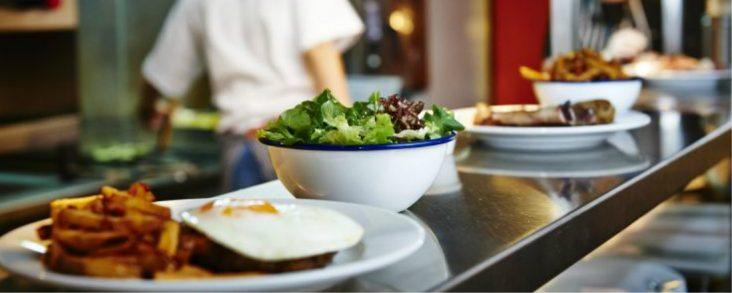Restaurant sector expects modest gains in 2018
by January 3, 2018 4:47 pm 585 views

The restaurant sector has seen sluggish growth over the past few years as consumer eating habits continue to change. Casual dining venues have seen the biggest drop in traffic as more consumers opt for convenient take-out options and ready-to-eat meals offered by grocers.
Restaurant analyst Bonnie Riggs with Chicago-based research firm NPD Group recently noted certain changes are taking place in the foodservice sector that restaurant owners are hoping will move the industry in a positive direction. Riggs said restaurant operators are focusing more on the demands of consumers and trying to align their operating strategies accordingly.
Riggs said consumers will continue be strapped for time and that will keep the demand for convenient meal options high. Retailers from Albertsons to Wal-Mart now offer ready-to-eat meals which has taken a toll on lunch crowds in restaurants. In response, more restaurants are participating in home delivery partnerships such as Bite Squad, GrubHub and BringMeThat. The partnerships allow consumers to order from participating restaurants which is delivered to their homes or work place by the logistics partner for a small fee.
Riggs said more consumers are using smartphones to order meals. She said restaurants offering this option are reaping the rewards. She said restaurant operators must decide which convenience-enablers are worthy of investment.
“Operating in a digital world is no longer a nice-to-have. It’s now a must-have for most operators to drive traffic in a positive direction in 2018 and beyond,” Riggs said, also noting that one size does not fit all and it will be imperative to understand your customers’ wants and needs from a technology standpoint.
Consumers are also eating more of their meals at home, according to Riggs, as online shopping and movie streaming is keeping families are home more. She said there are fewer reasons to leave the house and this is a problem for restaurants who rely solely on foot traffic.
NPD predicts home will be the most popular place to eat this year, as nearly 50% of dinners purchased from restaurants are consumed at home and many in-home meals are a blend of dishes people prepare and ready-to-eat meals purchased at restaurants. For instance, a consumer might want to make enchiladas at home, but order the Mexican rice with chips and salsa. Riggs said operators can win by making it easier to get foods and beverages to the home.
With restaurant traffic near a standstill, NPD said some operators will be hesitant to raise prices and instead focus on offering less-expensive foods to promote value on their menu. The analyst said consumers do appreciate value, but they are also savvy about prices and can often discern what’s a true value. With that, NPD warns operators to think carefully about tweaking menu prices up or down.
One solution to increase traffic involves loyalty programs, according to NPD who expects more restaurant owners to join the loyalty wagon this year. The programs are high on the list of incentives that lead consumers to visit restaurants more often. Restaurants like Flying Fish have a loyalty program and after 18 visits the customer gets a free meal. Riggs expects more restaurants using manual loyalty cards will move to digitize the experience so they can communicate regularly with customers on promotional offers via text or email.
NPD said the restaurant sector will have its own set of challenges this year with a shrinking labor pool, higher minimum wages and high turnover rates. NPD suggests operators to look at putting retention plans in place that include hiring and recruiting policy guidelines.
The National Restaurant Association forecast the restaurant industry to grow to $799 billion in revenues in 2017, up 4.3% from 2016. In real terms, though, this translates into a growth rate of 1.7%, consistent with the past few years.
“The past several years, and even the first quarter of this year, have definitely been one of the slower growth environments,” said B. Hudson Riehle, senior vice president of research for the trade group.
For 2018 and beyond, the restaurant industry should anticipate much of the same moderate growth rate.
“It is sustained real growth for the industry, but it is definitely a sustained moderate growth environment,” Riehle said.
Industry consultant Robert Veidenheimer said there’s an element of the population that’s doing well financially and is spending on foodservice. And there’s another part of the population that’s not doing as well. They are looking for cost-effective solutions for food and other areas.
Overall, he said the restaurant sector is stable and the growth is hit and miss.
“We’ve seen independents and smaller chains growing at a rate that’s double that of larger chains,” Veidenheimer said. “Independents have picked up momentum, driven by their engagement of consumers. In these instances, engagement takes the form of food quality and social elements related to the business and service.”
